Table of contents
Because of the automatic calculation of the ingredients, we differentiate between a raw lemon ( Citrus x limon ) or lime without peel ( peel not used ) and the raw lemon that we use including the whole peel (e.g. for jam). The difference to the smaller and greener lime (lime) should also be noted.
Use in the kitchen
We use the lemon by either squeezing or grating it or peeling it first (for lemon slices). The sour taste of the peeled lemon, i.e. the pulp, gives dishes or drinks a refreshing and exotic note. Lemon juice is also a natural antioxidant and, due to its pectin content, also a natural gelling agent.
Lemon juice is particularly good for flavoring and refining dishes. Lemon is a basic ingredient in raw vegan and gluten-free Erb-Müesli because, thanks to vitamin C, it increases the enzymes for converting α-linolenic acid (ALA) in the seeds into eicosapentaenoic acid (EPA) and docosahexaenoic acid (DHA). This is also the case with the oat flakes version. Other mueslis also contain lemons as a valuable ingredient, such as poppy seed and lemon porridge .
For soft drinks, smoothies , ice cream or cream desserts, use the taste of lemons to freshen up the dish.
In an oil-free salad dressing with avocado or with walnuts and orange juice, the acidity of the lemon is a must and serves as a supplement or replacement for vinegar. For spicy marinades, dressings, sauces or dips, you can combine the juice or, in the case of organic lemons, the grated peel with spices and herbs such as freshly groundpepper , mint , oregano , thyme or rosemary . Ginger , garlic or chili are also ideal spice combinations with sea salt and lemons.
Lemons also taste good with pasta ( wholegrain macaroni ), rice (e.g. as risotto ) or with low-calorie Shirataki noodles (e.g. as lemony Shirataki noodles with fennel ).
Lemon jam (Marmelata die limoni) is a well-known Sicilian type of jam. Lemon juice is also used as an acidic ingredient in jams and syrups.
Organic lemons should be used in desserts such as cakes, slices, tarts and cakes. Lemons are the main ingredient in Limoncello, a traditional Italian liqueur.
We also show possible uses and recipe ideas for lemon peel .
Recipe for refreshing ginger-lemon iced tea
Ingredients (for 6 glasses): 1 sprig of fresh mint , 1 piece of fresh ginger (thumb-sized), 1 liter of water , 100 ml of white grape juice , 1-2 organic lemons, ice cubes.
Preparation: Pour boiling water over the mint and grated ginger and let it steep for 15 minutes. Then let the tea cool to room temperature and then strain it through a fine sieve. Add the squeezed lemons and grape juice. Pour the finished iced tea into large glasses filled with ice cubes and garnish with lemon slices and edible flowers (violets, nasturtiums , mallow flowers , dandelions ).
Vegan recipe for lemon sorbet
Ingredients (for 4 people): 250 ml water, 100 g sugar , a few mint leaves, 2 g agar-agar , 6 lemons.
Preparation: Boil the water, sugar, mint leaves and agar-agar for at least one to two minutes. It is important to stick to the cooking time so that the agar-agar can gel. Peel or hollow out the lemons, remove the seeds and puree the whole lemons with a hand blender. Add the lemon puree to the sugar water and leave to cool. Prepare the lemon sorbet in the ice cream maker or in the freezer, stirring every hour.
You can also find vegan recipes with lemon, without peel, under the note: " Recipes that have the most of this ingredient ".
| Not only vegans or vegetarians should read this: Vegans often eat unhealthily. Avoidable nutritional mistakes . |
Purchasing - Storage
Lemons are part of the basic range of any western grocery store, such as Coop , Migros , Denner , Volg , Spar , Aldi , Lidl , Rewe , Edeka , Billa or Hofer . Since lemons are often exposed to high levels of pesticides, you should prefer to buy fruit from controlled organic cultivation, especially if you use the peel. Organic lemons are often available in the supermarkets mentioned above, occasionally at weekly markets and of course in organic shops, health food stores and natural food stores or online.
Lemons are in season all year round , as the trees produce flowers all year round when the climatic conditions are right, thus ensuring a continuous harvest. In the DA-CH countries, lemons mainly come from Spain and Italy, but are also imported from Argentina, Turkey and South Africa. 19
How big is a lemon? The fruits are egg- or spindle-shaped, round, oval, 4 to 8 cm wide, 5 to 12 cm long and weigh 50 to 250 g. 1
The availability of lemons varies depending on the size of the store, catchment area, etc. If you are interested in prices, please click on the ingredient lemons, raw (organic?) on our recorded food prices for the DA-CH countries. There you will find current prices from various supermarkets and their price development. Lemons without peel are
Lemons available in Europe are usually treated so that the peel stays yellow and the fruit does not dry out. Antifungal agents applied after harvesting are intended to prevent the fruit from quickly becoming moldy, and artificial wax and pesticides are intended to extend shelf life. The label "untreated" indicates that the fruit did not come into contact with chemicals or wax after harvesting, but most did while it was hanging on the tree. The regulations for organic lemons are much stricter, which is why consumer advocates strongly recommend buying organic fruit if you want to eat the peel or use it for flavoring.
Storage tips
Cut lemons should be used quickly or stored in the fridge for a few days. Wrap some kitchen paper around the pieces of fruit, which will draw moisture out and cause the citrus fruit to dry out rather than go moldy. Since lemons are very sensitive to cold, the temperature in the fridge should not be below 5 °C.
If you only need a small part of the lemon, cut a small piece off the lemon instead of cutting it in half. If you need very little juice, you can pierce the lemon with a fork or toothpick and squeeze it a little. Kitchen paper will also protect this part.
Care should be taken to avoid contact between lemons and aluminum foil, as the acid dissolves aluminum, and aluminum can cause various diseases, including Alzheimer's and cancer.
Another way to store cut lemons is to freeze lemon juice, e.g. in convenient portion-sized ice cube trays.
Whole lemons can be stored for up to nine months at 10 to 12 °C and 85 to 95% relative humidity. 1
The high acid content not only protects the lemon juice from oxidation losses, but also other fresh foods. Lemon juice can be used to keep cut fruit and vegetables fresh. You can prevent brown surfaces by dripping the juice onto the cut surfaces of apples , pears , bananas , avocados , celery , chicory , etc.
Ingredients - Nutritional values - Calories
Lemons have about 29 kcal per 100 g, of which carbohydrates make up about 9% and proteins about 1%; they actually do not contain any fat. 3
The lemon is known as a vitamin C -rich fruit, but with an average content of 51 mg of vitamin C per 100 g of pulp (covers about 66% of the daily requirement), it is far behind sweet peppers (183.5 mg), black currants (181 mg), wild garlic (178.5 mg) or kiwi (93 mg). 3
Lemons contain valuable nutrients and are a reliable source of vitamin C thanks to their year-round availability and good storage properties. Nevertheless, it is an exaggeration to call lemons a superfood, as other fruits and vegetables contain significantly more vitamin C.
Potassium is still worth mentioning at 138 mg/100g, grapefruits or cucumbers (peeled) have a similar value. Avocados have much more potassium at 485 mg/100g, which covers about 24% of the daily requirement. 3
Folic acid is only contained in a small amount of 11 µg/100g in lemons. Sea buckthorn berries and ginger have a comparable content. Among fresh fruits, avocados with 81 µg/100g and mangos with 43 µg/100g have more folate than lemons. 3
Over 300 volatile substances make up the aroma of the lemon, with citral as the main component. 1 Citral and the essential oils create the typical smell of the citrus fruit. The organic acids contained (citric, malic, acetic and formic acid) enhance the effect of ascorbic acid and vitamin C. The lemon pulp also contains the flavonoid diosmin and the main flavanone glycoside hesperidin. Pectin is found in the pulp and in the inner white skin under the peel. 1,2
The total ingredients of lemons, without peel, the coverage of the daily requirement and comparison values with other ingredients can be found in our nutrient tables. In the article Nutrients explained you will get a detailed insight into the topic.
Effects on health
How healthy is a lemon? The flavonoids it contains have an antioxidant, anticarcinogenic effect and protect the capillaries. They also have a positive effect on arteriosclerosis, thrombosis and edema. Vitamin C strengthens the immune system and improves the absorption of iron from other plant-based foods. 2
Hesperidin, an important flavanone of citrus plants, has anti-inflammatory and analgesic effects. 4 Epidemiological studies show a lower risk of various diseases with higher flavonoid intake, including mortality from cardiovascular diseases. Citrus flavonoids (including quercetin) improve oxidative stress, hyperlipidemia, and arterial blood pressure and lipid metabolism. 5 Various studies, including a 2014 dissertation, show that bioflavonoids such as quercetin are also directly effective against cancer (by inhibiting or preventing growth) by inducing cell morphological changes. 6
Lemon seeds (and the white parts of the peel) contain limonoids, some of whose health-promoting properties have been proven. They have been found to have antipyretic, antibacterial and antiviral effects. Limonoids have also been investigated as a treatment for various types of cancer, although further confirmatory clinical studies are needed. 7 Limonoids can reduce certain liver proteins in overweight people, which can prevent associated chronic inflammation (including kidney disease and cancer). 8
The internet is full of lemon juice diets that are supposed to help you lose weight because lemons supposedly boost fat burning. The placebo effect may help here, as there is no scientific evidence for this yet. 14
Dangers - Intolerances - Side effects
Is it good to eat a whole lemon? In principle, you can, but it's rather excessive. In a few people, citrus fruits can also trigger an allergy. Possible effects include oral allergy syndromes (OAS), such as discomfort in the mouth and throat area or a furry feeling on the tongue. Skin reactions can take up to two days to appear. In this case, an epicutaneous test or allergy test by an allergist is recommended. You should first clarify whether it is fructose intolerance or whether preservatives are the trigger. 17
Are lemon seeds poisonous? Lemon seeds contain an insignificant amount of amygdalin, as do other foods such as almonds . You should not eat them regularly in quantities of more than 100 g. Heating or drying ground lemon seeds allows this precursor of hydrogen cyanide to escape. 9
Citric acid, whether as a natural component of a food or as an additive (E 330), attacks tooth enamel. Therefore, you should not brush your teeth vigorously after eating or drinking acidic foods, as this will cause increased abrasion of the upper layers of the teeth. Instead, we recommend rinsing your mouth with water. This can dilute the acid and speed up the replacement of the dissolved minerals. 10
Use as a recognized medicinal plant
Lemons are not listed as medicinal products by HMPC , ESCOP , Commission E. However, lemon peel, Pericarpium citri, and lemon oil, Limonis aetheroleum, are still used as medicinal herbs. 11 Lemon juice is often used for colds, minor skin injuries, insect bites, bleeding gums and in skin care products. 1
Lemon has a diuretic, anti-inflammatory and circulation-stimulating effect. When taken internally, lemon can help with varicose veins, kidney stones, hemorrhoids, mild fevers and mucous bronchi. It can be used externally for eczema, chilblains, sunburn and poisonous insect bites. Lemon can also be used as a gargle for sore throats. 12
Is lemon juice good for the skin? Lemon juice is also found in balanced amounts in cosmetics and body care products. However, you should not apply pure lemon juice to the skin, as the concentrated acids can cause skin irritation.
Ecological footprint - animal welfare
The ecological CO 2 footprint of lemons depends on various aspects, including the cultivation method (conventional/organic), seasonality, the country of origin and the corresponding transport and, if applicable, the packaging. 22 The Big Climate Database gives an ecological CO 2 footprint of 0.94 kg CO 2 eq/kg for lemons in Denmark, with a large proportion of these emissions being caused by transport, as the goods are most likely imported. 23 The same applies to lemon consumption in Switzerland, where lemons are primarily sourced from Spain, Brazil and Italy. Here too, transport has the greatest impact on the ecological footprint. 16
The biodiversity losses caused by lemon cultivation are greatest in Spain, followed by Brazil and Italy. This is due, among other things, to the additional irrigation that is required in these countries. However, since Spain and Italy are regions with relatively little rainfall, important groundwater reserves must be used for artificial irrigation. 642 litres of water are needed to produce 1 kg of lemons. 24
In conventional agriculture, synthetic pesticides and herbicides are often used to combat unwanted plants and insects. However, these have been proven to have a negative impact on the environment and affect important pollinators, as well as birds and mammals. The pesticides used are often found in the end product, including lemons. 25 Accordingly, when shopping, you should not only pay attention to the country of origin and the shortest possible transport routes, but also to buy organic products. The use of such pesticides is prohibited here.
In a study on the sustainability of lemon cultivation in Sicily, it was also confirmed that organic cultivation is more sustainable than conventional cultivation thanks to environmentally friendly fertilizers and pesticides. 25
Worldwide occurrence - cultivation
The center of origin (gene center) of edible citrus fruits is believed to be in the southeast of the Himalayas, in the area of Assam, northern Myanmar and western Yunnan. 15 Mandarins were not introduced to Europe from China until 1805.
The main growing areas are mainly in India, Mexico, China, Turkey and Brazil. Spain is the 7th largest lemon producer in the world. In 2021, the global harvest of lemons and limes was 20.8 million tons. 18
Growing in the garden or as a potted plant
Lemon trees can also be grown in your own garden in Central Europe as a food or ornamental plant. From mid-May until the first frost in early autumn, the lemon tree can be kept outdoors as a potted plant in a sheltered spot. In winter, the temperature must be adjusted to the light conditions. If the tree is overwintered in a bright but cold place, the leaves still receive enough light for photosynthesis, but the roots are almost inactive at 12.5 °C and below. This means that the leaves are no longer adequately supplied and fall off (winter leaf drop).
A mixture of peat (or coconut fibers as a peat substitute), compost and loamy garden soil is suitable as a plant substrate. The garden soil should be low in lime, but ideally lime-free, and have a slightly acidic pH value. Rainwater is recommended as a lime-free water for watering. Once a month, the plant can be given additional nutrients using a fertilizer that is high in phosphates but low in nitrogen. Common pests are scale insects. The plant is mainly propagated by cuttings. 13
In addition to insects and wind, lemon blossoms can self-pollinate. Unfertilized blossoms can develop into fruits, but these are seedless. 13 As a self-fertile plant, the lemon tree is ideal for winter gardens and greenhouses.
Cultivation - Harvest
The cultivation takes place in large plantations, which are often divided into sections. In addition to new and old trees, there are also those with optimal yield levels. The evergreen, 2.5-3m tall lemon tree flowers and bears fruit in warm, humid conditions all year round and can therefore produce up to four harvests. Depending on the variety, the trees have or have no thorns, the flowers can be white, reddish or purple, the leaves are dark green and leathery. The fruits are berries, which vary in size, shape, color, skin thickness, kernel content and taste depending on the variety. They need lower temperatures to change the color of the skin. If there is no cooling at night, even ripe fruit remains green. 19
Lemon trees need south-facing slopes that protect them from the wind. Since they cannot tolerate frost, a frost-free area is preferable. The subsoil is usually sandy loam. Targeted fertilization is important for both conventionally and organically produced lemons. 19
Further information
The name lemon or lime comes from the Arabic ليمون and, according to the transcription of the German Oriental Society ( DMG ), is "laimūn" ("lemon"). Lemons are the fist-sized fruits of the lemon tree ( Citrus x limon ) and come from the genus of citrus plants ( Citrus ). Today's lemon varieties are a cross between bitter orange ( Citrus × aurantium ) and citron ( Citrus medica ).
The botanical classification of species of the genus Citrus is very difficult because, on the one hand, hybrids are formed and, on the other hand, cultivars are created through cross-pollination. The most important cultivars are: "Bearss", "Berna", "Eureka", "Femminello", "Genova", "Interdonato", "Lisbon", "Monachello", etc. Among the hybrids, the following are known: "Lemonime", "Lumia", "Ponderosa", "Volkamer". 20
The "Meyer lemon" ( Citrus × Meyeri , Citrus × limon "meyeri" or Citrus × jambhiri "Meyer") was named after the plant researcher Frank Meyer , who discovered it in 1908. It is believed that this hybrid is a cross between a lemon and an orange or a mandarin and a lemon. It can withstand temperatures down to -3 °C and is therefore considered to be quite hardy. Compared to the "Eureka", the Meyer lemon contains less acid. 21
Other related species of the genus Citrus are: clementine ( Citrus × aurantium ), pomelo ( C. grandis ), grapefruit ( Citrus × aurantium ), bitter orange ( Citrus × aurantium L.) or pomelo ( C. maxima ), to name just a few.
Information about the name
In earlier centuries, "Zitrone" was actually the name for a citron. In German, the lemon was called Limone until the late Middle Ages, which is still the case in some regions of Austria. The term lemonade is derived from Limone. In the past, only lemons were used for this soft drink. In English, "citron" still means citron and lemons are called "lemons". Today, the word Zitrone is also used as a collective term for Limone, Citron and Lime.
- Michael Weber, Federal diploma Pharmacist, MSc Infection Biology
- Katharina Hofer, MSc Organic Agriculture
- Natalie Sidler, Dr. phil. I
- Jasmin Pickl, Dipl. Ing. (MSc) Ökologische Landwirtschaft

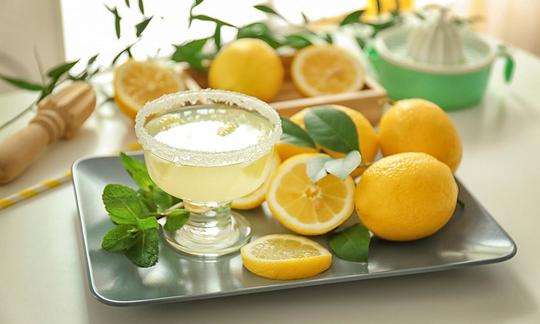

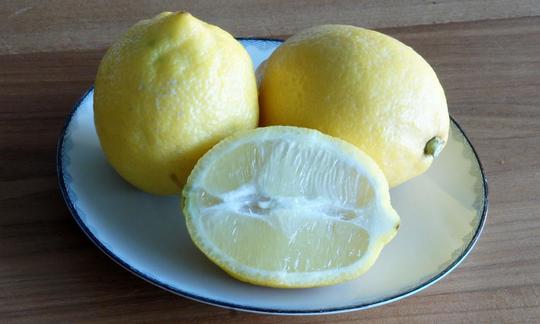

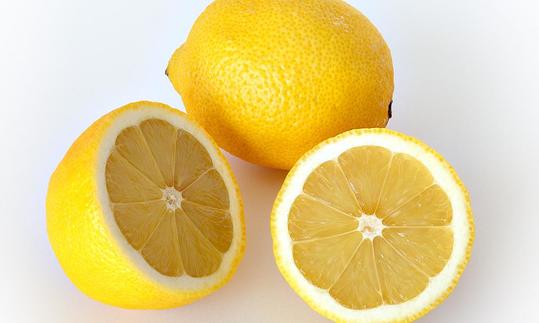

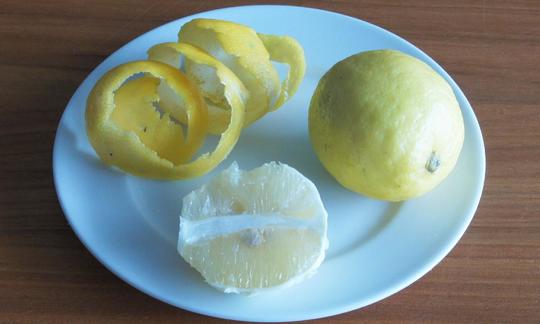

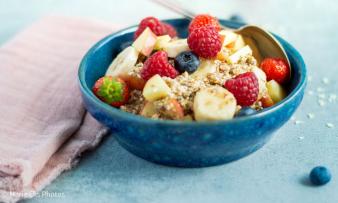







Comments